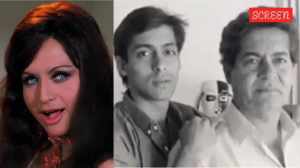Jaffer reaches destination after long, lonely walk
"It's a lonely feeling as you walk on to a Test arena to do battle with eleven players from another country," Richie Benaud once wrote. When...

“It’s a lonely feeling as you walk on to a Test arena to do battle with eleven players from another country,” Richie Benaud once wrote. When Wasim Jaffer, however, was ushered in by Carl Hooper and his men on to the Antigua Recreation Ground on May 10, he must have been more conscious of two men strolling around in the media stand. His two childhood heroes, fellow Bombayite Sunil Gavaskar and Antigua’s greatest bat Viv Richards, were fortuitously present to witness him post his best score so far in his short four-Test-old career. To cheer his confident 86 after a brave 51 at Bridgetown.
It’s a damning comment on Indian cricket’s chronic ailments—a traffic jam as worthy batsmen queue up for slots in the middle order, a desperate crisis as one promising youngster after another is given a shot right at the top—that so very little is asked of its Test openers. Especially, on bouncy wickets abroad. Stay there, block, block, block. and you’re in, boy.
Shiv Sundar Das is paying the penalty for that. Jaffer seems to have set his bar a trifle higher. He gave early notice this weekend. In the very second over in St John’s—when, mind you, the placidity of the pitch was still a well-concealed secret, when Barbadian memories had the Indian camp edgy with visions of yet another innings capsizing—the 24-year-old despatched the ball with elegant ease to the third man fence. Nary a false shot, nary a hint of tentativeness, he took no risk, but worked up an entertaining pace by punishing anything short with the free flow of his bat. Hooper could have studded the cover region with fielders but chances are, through that maze Jaffer would have still found a straight trajectory to the fence.
“Opening in international cricket is the toughest job,” says Jaffer. “When you face the new ball, chances of getting out are very high. You just have to be patient for the first hour. You have to play very straight, take minimum risk. But when you see a loose ball you have to hit it.” That’s what he did at the ARG, ensuring that the first two sessions of the Test were the most engrossing, pulling with him the often circumspect Rahul Dravid into a brisk pageantry of timing and technique.
It’s been a long journey to the centre for Jaffer. He carries with him the hopes of many lives dedicated to the nurturing of his talent, the weight of familial sacrifices made for this stint under the sun, the commitment to sibling ambitions. Says he: “I used to play well in the streets with the older boys. My brother Kalim, who’s 10 years older, could not make it as a cricketer. He took interest in me, he took me to a different school in the 7th standard, Anjuman Islam School, where there was more emphasis on cricket. My family was not very strong financially, but they used to say, build a career in this.”
It’s difficult for him to pinpoint the moment in time when that dream of greatness became more than just a shared dream. “I believed,” he affirms, to the soothing strains of old ghazals on a drizzly Antiguan night, home suddenly a little farther away. “My brother was the one who believed I had to make it. He made a lot of sacrifices, he devoted a lot of time to me. He gave up job opportunities abroad. It made me more determined to do well.”
These could be telling observations. As play concludes each day, as West Indian stadia burst into a raucous musical competition, as mediapersons descend on the dressing rooms, as fellow cricketers rush around chatting or expending excess energy in a game of soccer, Jaffer can always be found a little separate. Seated quietly, he can be found gazing steadily out at the now covered pitch.
Where does this calmness come from? “I’m very quiet by nature,” he states. It could be religion: “I pray all the time, in the morning and in the evening, I read the Koran. It builds your confidence, you believe something is helping you.”
It perhaps also aids in meditating on the curious interventions of destiny. Jaffer had been expecting a call for many years. In his 1996-97 debut for Bombay, under the captaincy of Sanjay Manjrekar, he made a triple century and was on the field for all four days, keeping early tryst with the record books. In that single Ranji season, he emerged with the highest average.
As always, then too India were ruing the paucity of opening batsmen, Navjot Sidhu’s participation was somewhat uncertain—and stirring reports about this teenager led to a volley of advice that he had better be given passage to the Caribbean for a forthcoming tour. As it happens, he had to wait another five years for a ticket to these emerald isles. It’s just as well, he says with the benefit of hindsight, “I was very young.”
Yes, it’s a funny old game, he laughs, when reminded about his two-wicket haul in Antigua. He does bowl once in a while in first class cricket, BUT these are his first wickets. Other firsts too are eagerly awaited. Like a chance to bat in an ODI. Five-day games, then one-days—that’s been his route in first-class cricket too. “I played my first one-day for Bombay in 2000,” he recalls, “and in four matches I got one century and three 50s.”
Take note, selectors. And purists, take delight. Jaffer says Tests will always be a priority. “This, after all, is the real test,” he states. So far the report card is extremely encouraging.






- 01
- 02
- 03
- 04
- 05

























